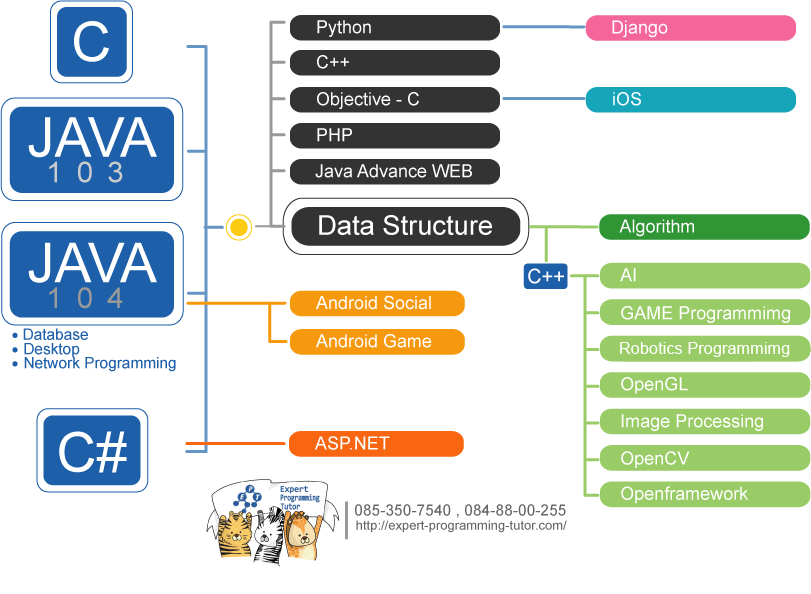เรียนรู้เรื่องฐานข้อมูล - การเพิ่มประสิทธิภาพในการทำ Query
โลกของเทคโนโลยีที่เปลี่ยนแปลงอย่างรวดเร็วในปัจจุบัน การจัดการฐานข้อมูลที่มีประสิทธิภาพมีความสำคัญอย่างยิ่ง ไม่ว่าจะเป็นองค์กรขนาดใหญ่หรือธุรกิจขนาดเล็ก `query optimization` หรือการเพิ่มประสิทธิภาพในการคิวรี่เป็นหัวใจสำคัญที่ช่วยลดเวลาในการประมวลผล ทำให้ระบบทำงานได้รวดเร็วและมีประสิทธิภาพยิ่งขึ้น
`Query Optimization` หมายถึงกระบวนการปรับปรุงคำสั่งในการคิวรี่ข้อมูลให้ทำงานได้อย่างมีประสิทธิภาพที่สุด โดยทั่วไปกระบวนการนี้เกี่ยวข้องกับการเลือกใช้วิธีการที่ดีที่สุดในการดึงข้อมูลจากฐานข้อมูลตามคำสั่ง `SQL` ที่ผู้ใช้งานส่งมา ตัวควบคุมของระบบจะทำการประเมินวิธีการต่าง ๆ และเลือกแผนการที่คิดว่าจะใช้ขั้นต่ำทรัพยากรในการทำงาน
1. การใช้ Index อย่างมีประสิทธิภาพ
การใช้ดัชนี (Index) สามารถช่วยในการค้นหาข้อมูลในตารางใหญ่ๆ ได้อย่างรวดเร็วอย่างยิ่ง เขตข้อมูลที่มักจะใช้ในการกรองข้อมูลควรถูกตั้งค่าเป็นดัชนีเพื่อเพิ่มความเร็วตัวอย่างเช่น:
CREATE INDEX idx_customer_name ON customers (customer_name);
2. การเลือกใช้ Join ที่เหมาะสม
การใช้ทฤษฎี Join อย่างเหมาะสมเช่น Inner Join, Left Join หรือ Right Join สามารถปรับปรุงประสิทธิภาพได้ โดยลดขนาดข้อมูลที่ต้องประมวลผล ตัวอย่าง:
SELECT a.order_id, a.order_date, b.customer_name
FROM orders a
INNER JOIN customers b ON a.customer_id = b.customer_id;
3. การใช้ Limit เพื่อควบคุมปริมาณข้อมูลที่ดึงออกมา
หากไม่จำเป็นต้องดึงข้อมูลทั้งหมด การใช้คำสั่ง LIMIT สามารถช่วยลดปริมาณข้อมูลที่ต้องประมวลผลได้ ตัวอย่าง:
SELECT * FROM orders ORDER BY order_date DESC LIMIT 10;
4. การหลีกเลี่ยง SELECT *
เมื่อสามารถ ลิสต์เขตข้อมูลที่ต้องการได้ ควรเลือกเฉพาะเขตข้อมูลที่ต้องการใช้งานเพื่อลดภาระในการดึงข้อมูล:
SELECT customer_id, customer_name FROM customers;
สมมติว่ามี `query` เดิมที่ใช้เวลานานในการรันดังนี้:
SELECT * FROM products WHERE category = 'Electronics' AND price < 500;
หากเราดูใน Execution Plan และพบว่าตาราง `products` ไม่มีดัชนีใน `category` และ `price` อาจทำให้การคิวรี่ช้า วิธีแก้ไขคือสร้าง Index:
CREATE INDEX idx_category_price ON products (category, price);
การเพิ่มประสิทธิภาพคำสั่งคิวรี่เป็นสิ่งที่นักพัฒนาฐานข้อมูลควรให้ความสำคัญ เหมือนกับการเลือกเส้นทางที่สั้นที่สุดเพื่อไปถึงเป้าหมาย โดยการทำด้วยวิธีการที่ถูกต้องจะช่วยให้การทำงานของฐานข้อมูลราบรื่นและรวดเร็วขึ้น การทำความเข้าใจเรื่อง `query optimization` จะไม่เพียงทำให้การจัดการข้อมูลของคุณมีประสิทธิภาพ แต่ยังช่วยประหยัดทรัพยากรได้อย่างยิ่ง
หากคุณสนใจที่จะเรียนรู้เพิ่มเติมเกี่ยวกับการจัดการฐานข้อมูลและการปรับปรุงประสิทธิภาพในด้านการเขียนโปรแกรม การศึกษาและพัฒนาตนเองกับ EPT จะเป็นทางเลือกที่ดีเนื่องจากเรามีผู้เชี่ยวชาญที่พร้อมจะแบ่งปันความรู้และประสบการณ์กับคุณ.
หมายเหตุ: ข้อมูลในบทความนี้อาจจะผิด โปรดตรวจสอบความถูกต้องของบทความอีกครั้งหนึ่ง บทความนี้ไม่สามารถนำไปใช้อ้างอิงใด ๆ ได้ ทาง EPT ไม่ขอยืนยันความถูกต้อง และไม่ขอรับผิดชอบต่อความเสียหายใดที่เกิดจากบทความชุดนี้ทั้งทางทรัพย์สิน ร่างกาย หรือจิตใจของผู้อ่านและผู้เกี่ยวข้อง
หากเจอข้อผิดพลาด หรือต้องการพูดคุย ติดต่อได้ที่ https://m.me/expert.Programming.Tutor/
Tag ที่น่าสนใจ: java c# vb.net python c c++ machine_learning web database oop cloud aws ios android
หากมีข้อผิดพลาด/ต้องการพูดคุยเพิ่มเติมเกี่ยวกับบทความนี้ กรุณาแจ้งที่ http://m.me/Expert.Programming.Tutor
085-350-7540 (DTAC)
084-88-00-255 (AIS)
026-111-618
หรือทาง EMAIL: NTPRINTF@GMAIL.COM
